12 Giant Sharks That Have Swum Shockingly Close To U.S. Shores
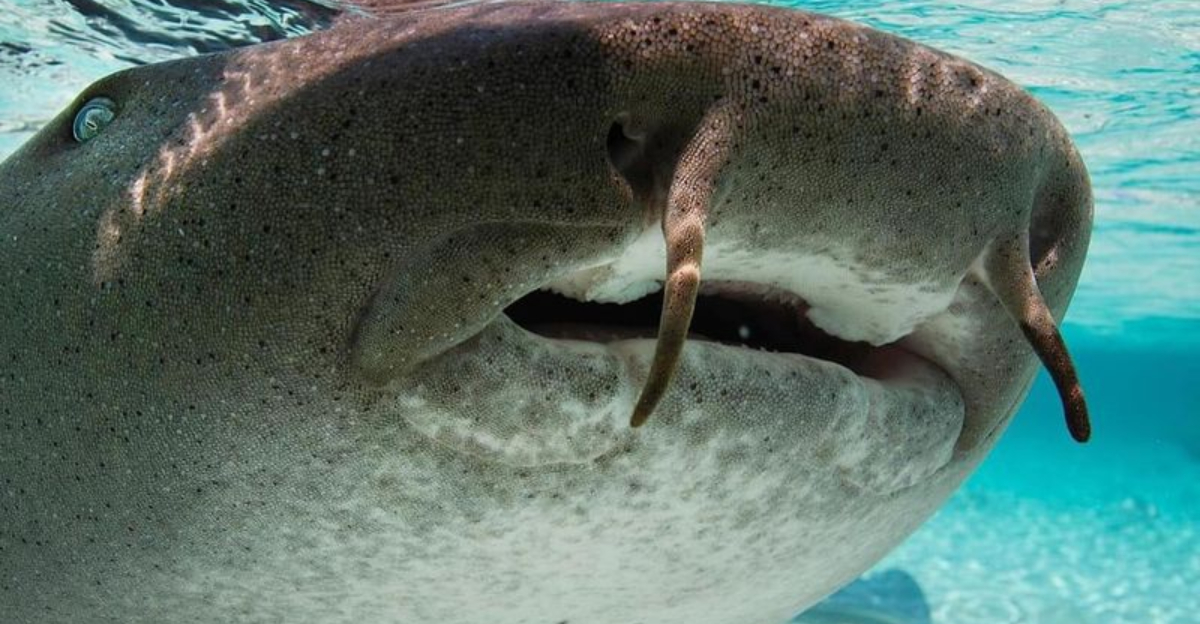
Imagine you’re lounging on a beach, a refreshing drink in hand, when you hear a gasp from the person next to you.
You turn to see a massive fin breaking the ocean’s surface, sending a shiver down your spine.
Let’s dive into the fascinating world of these ocean giants and explore some incredible instances where they’ve swum a little too close for comfort.
1. Great White Shark
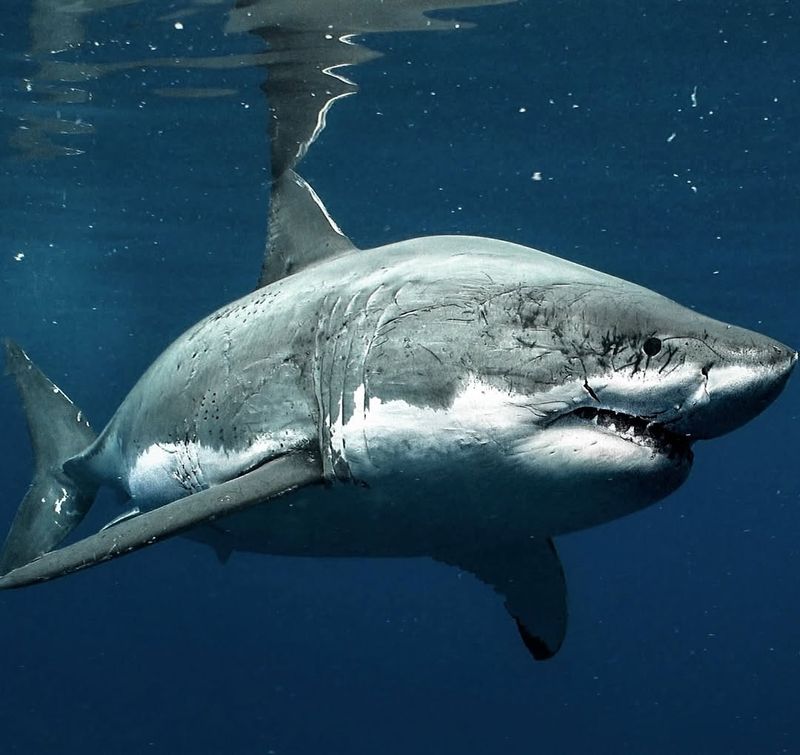
Ever thought you might share the beach with a star of Jaws? The Great White Shark made headlines when it hugged the coasts of Cape Cod.
This iconic predator, known for its toothy grin, sometimes lurks just where you’d least expect. Cape Cod residents often find themselves sharing the waters with these ocean giants.
The thrill of spotting one, though intimidating, is a reminder of the ocean’s wild and untamed beauty. Not your everyday beach buddy, right?
2. Tiger Shark
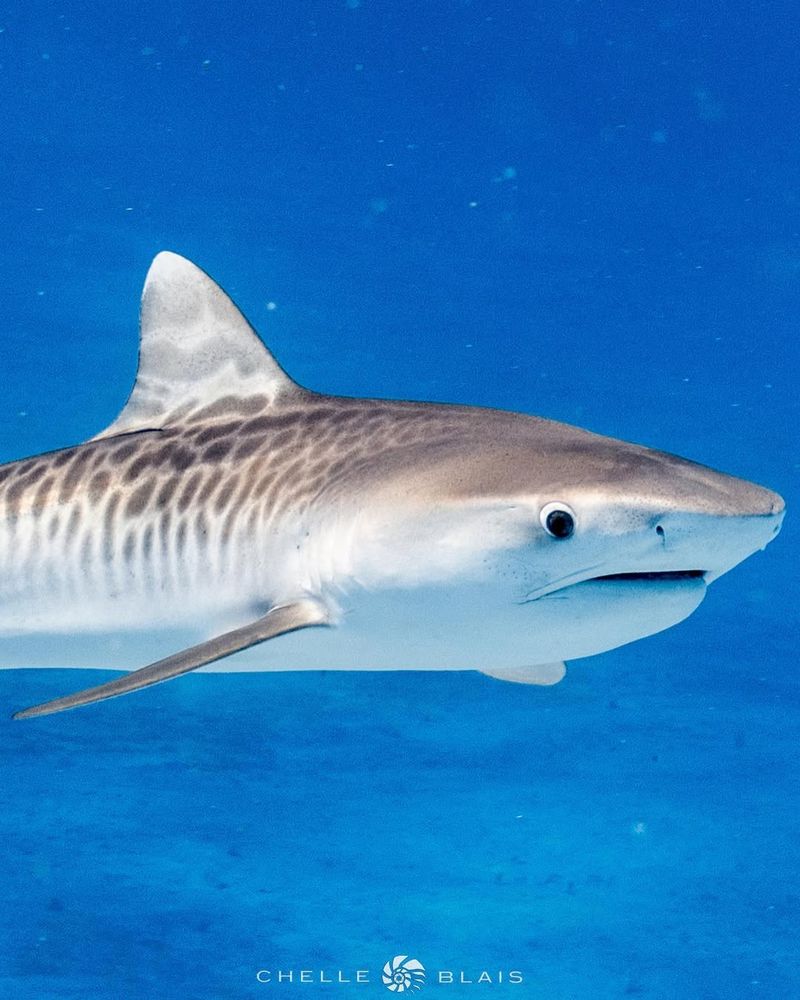
With stripes like a jungle cat, Tiger Sharks are the stealthy predators of the sea. These impressive creatures have been known to glide through the warm waters of Hawaii, sometimes venturing near shorelines.
Imagine sunbathing in paradise and spotting those striped patterns beneath the waves! These sharks are curious and opportunistic, often exploring areas close to human activity.
Their presence is both a thrill and a gentle reminder of the ocean’s vast mysteries.
3. Hammerhead Shark
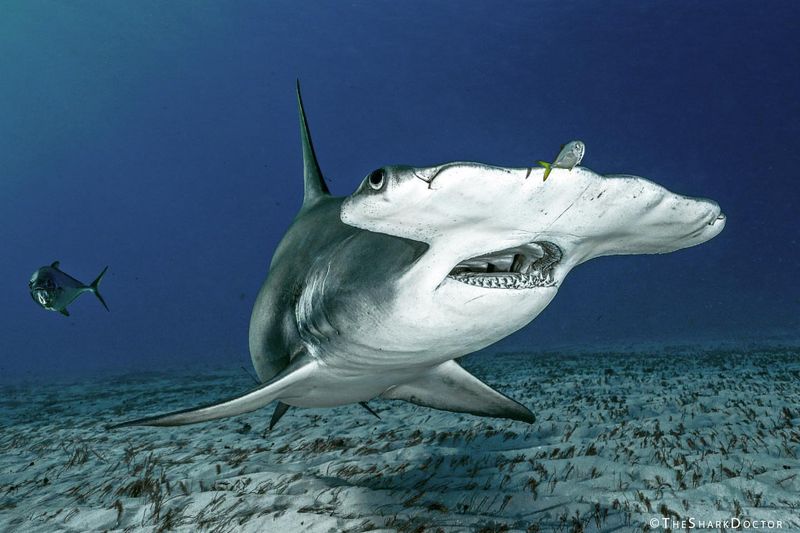
You know you’re in for a spectacle when you spot that unmistakable shape gliding through the water.
Hammerhead Sharks, with their oddly shaped heads, are frequent visitors to Florida’s coastline. Their wide-set eyes give them a unique advantage in scanning their surroundings, making them efficient hunters.
These fascinating creatures often swim in schools, creating a mesmerizing sight for lucky beachgoers. Who wouldn’t want to witness such a majestic display?
4. Bull Shark
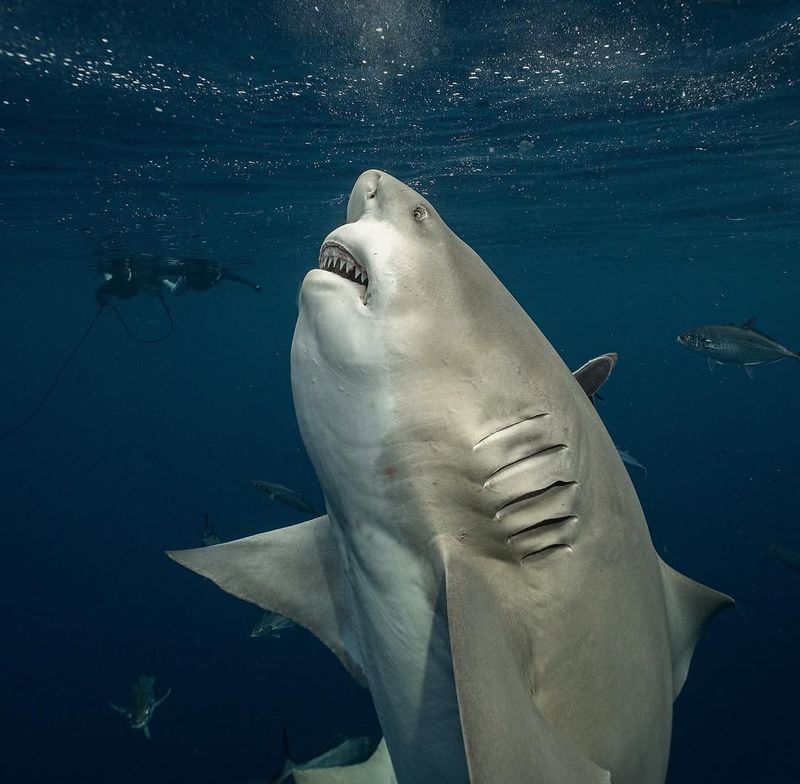
Who would have guessed that sharks could hang out in rivers? Bull Sharks defy the norm, making appearances in freshwater areas.
They’ve been spotted in the Mississippi River and along the coastal waters of the Gulf of Mexico. Their adaptability is nothing short of extraordinary, thriving in both salt and freshwater environments.
This makes every river crossing a potential shark encounter! Their presence showcases the incredible adaptability of ocean life.
5. Whale Shark
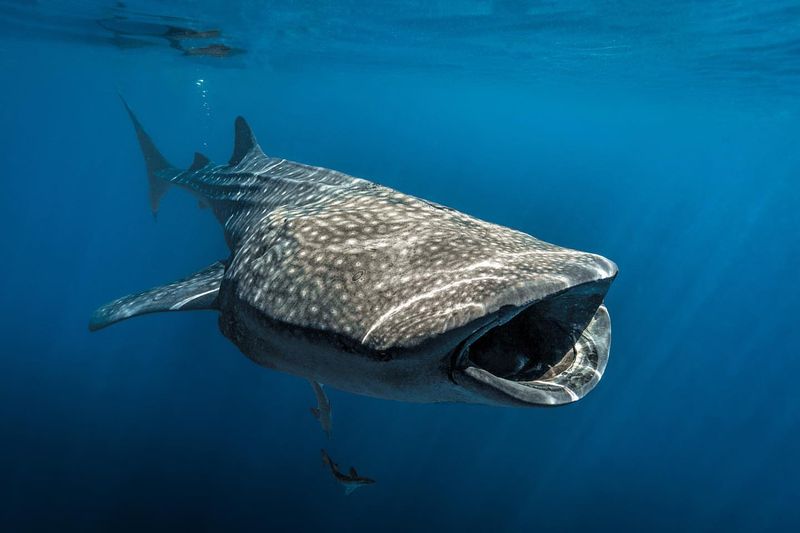
Despite their enormous size, Whale Sharks are the gentle giants of the ocean. Often seen near the Gulf of Mexico, these filter-feeders glide gracefully close to the surface.
They feed on plankton, making them as harmless as they are breathtaking. Imagine snorkeling and suddenly finding yourself next to a creature the size of a bus!
Their peaceful presence reminds us of the ocean’s gentle side, a stark contrast to their more fearsome cousins.
6. Lemon Shark
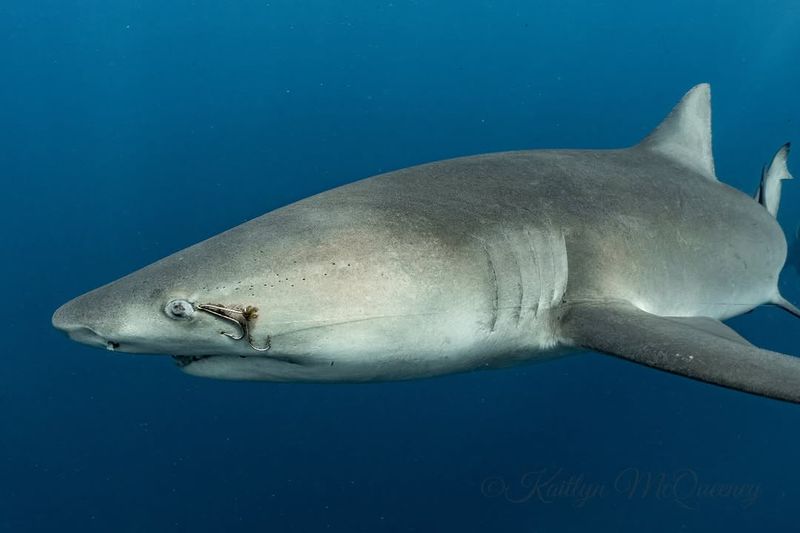
The Lemon Shark’s yellow-tinted body blends perfectly with sandy seabeds. These sharks are commonly found around the Bahamas but have also been seen closer to the Florida shores.
Known for their social nature, Lemon Sharks often gather in groups, basking in the warmth of the shallow waters.
Spotting these sharks is like finding a piece of living art, their coloration a nod to their namesake. They bring a splash of color to the ocean’s palette.
7. Mako Shark
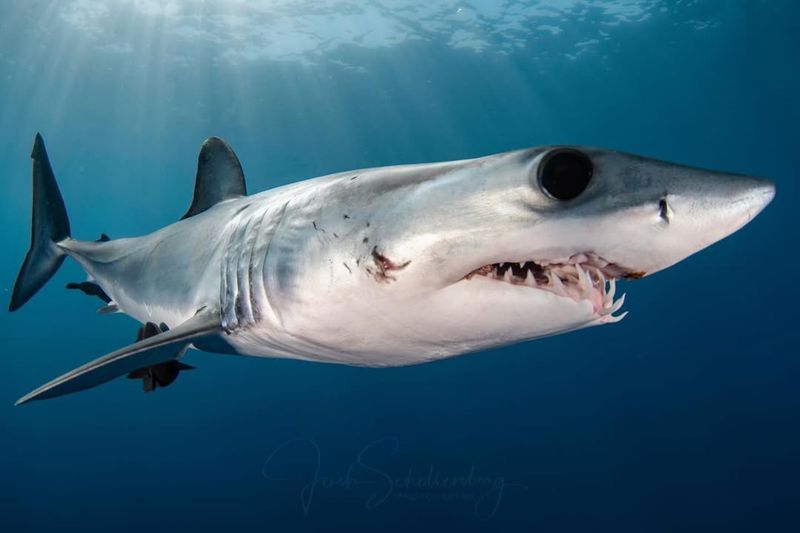
Ever heard of a shark that’s faster than your average speedboat? Meet the Mako Shark, the ocean’s speed demon.
These aerodynamic predators have been spotted near the Californian coastlines, thrilling observers with their acrobatic leaps.
Their sleek, torpedo-shaped bodies cut through water with incredible precision. When a Mako breaches, it’s a breathtaking display of power and grace. If you blink, you might just miss it!
8. Blue Shark
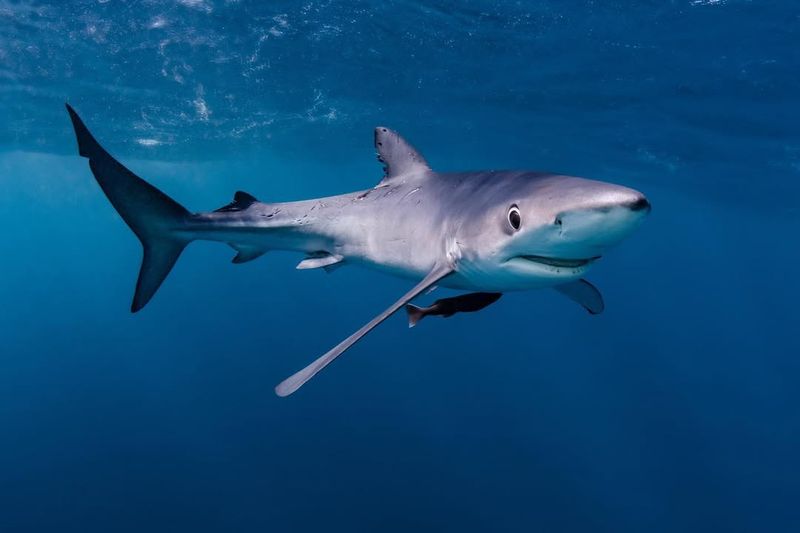
Sleek and elegant, Blue Sharks are the ballerinas of the sea. Their slender bodies and deep blue coloration make them a sight to behold, particularly along the New England coast.
Despite their graceful appearance, these sharks are efficient hunters, often traveling great distances in search of food.
They’re a vivid reminder of the ocean’s beauty and the graceful dance of marine life. Who wouldn’t be enchanted by such elegance?
9. Nurse Shark
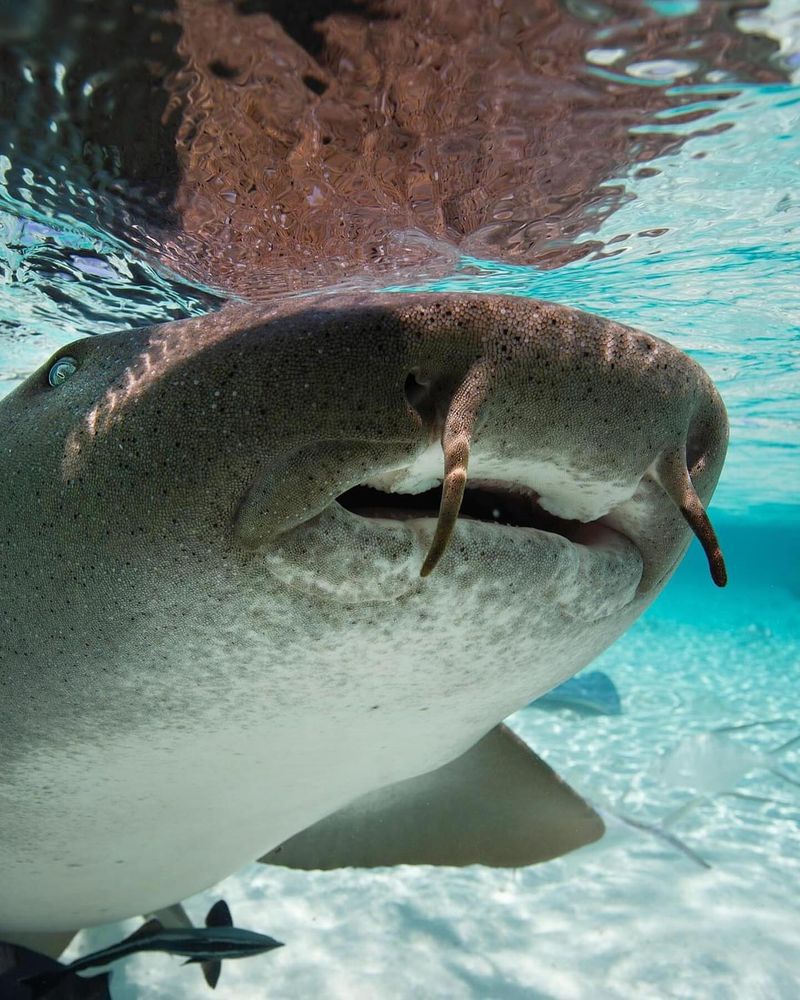
Think of the Nurse Shark as the couch potato of the shark world, often seen lounging on the ocean floor. These docile creatures are common in the Florida Keys, where they rest among the coral reefs.
Their sluggish demeanor and harmless nature make them favorite subjects for divers. Spotting a Nurse Shark is like stumbling upon a hidden gem, a gentle giant enjoying a lazy afternoon. What a serene sight!
10. Thresher Shark
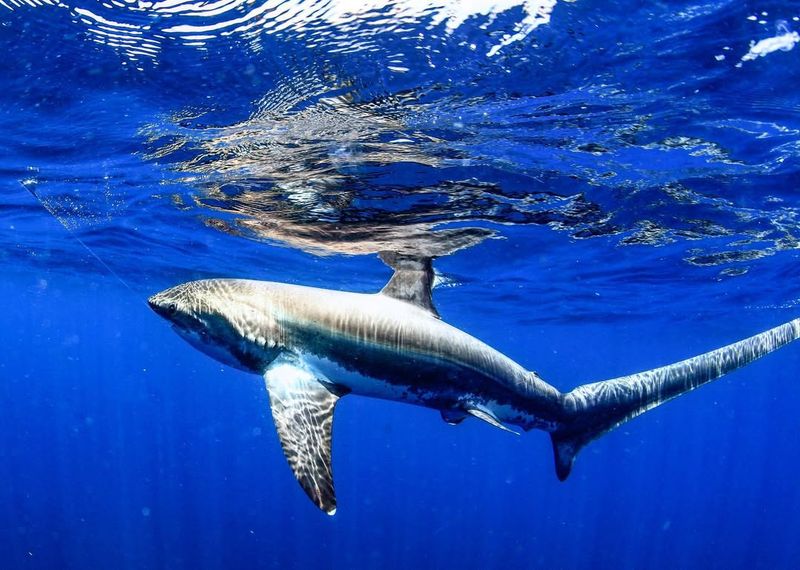
Sporting a tail as long as its body, the Thresher Shark is quite the spectacle. These sharks use their elongated tails to stun prey, often seen near the waters off New York.
Their unique hunting technique is both fascinating and effective, making them one of nature’s more innovative predators.
Watching a Thresher in action is like seeing a master craftsman at work. Who knew a tail could be so versatile?
11. Sandbar Shark
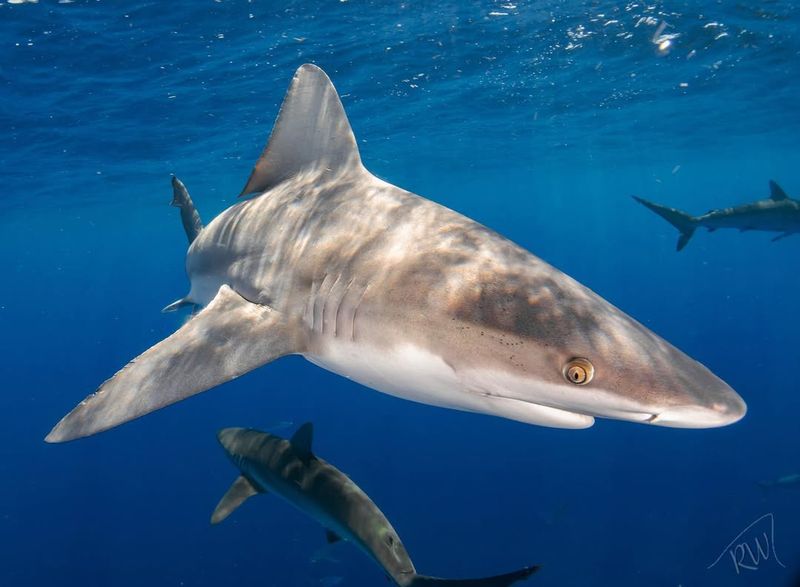
The Sandbar Shark, with its tall dorsal fin, often patrols the Jersey shorelines. Known for their preference for warmer waters, these sharks are frequent visitors to sandy coastal areas.
Their presence is a captivating reminder of the ocean’s diverse inhabitants. With a fin that slices through the water’s surface, they’re an impressive sight for any beachgoer. Would you dare to swim nearby?
12. Basking Shark
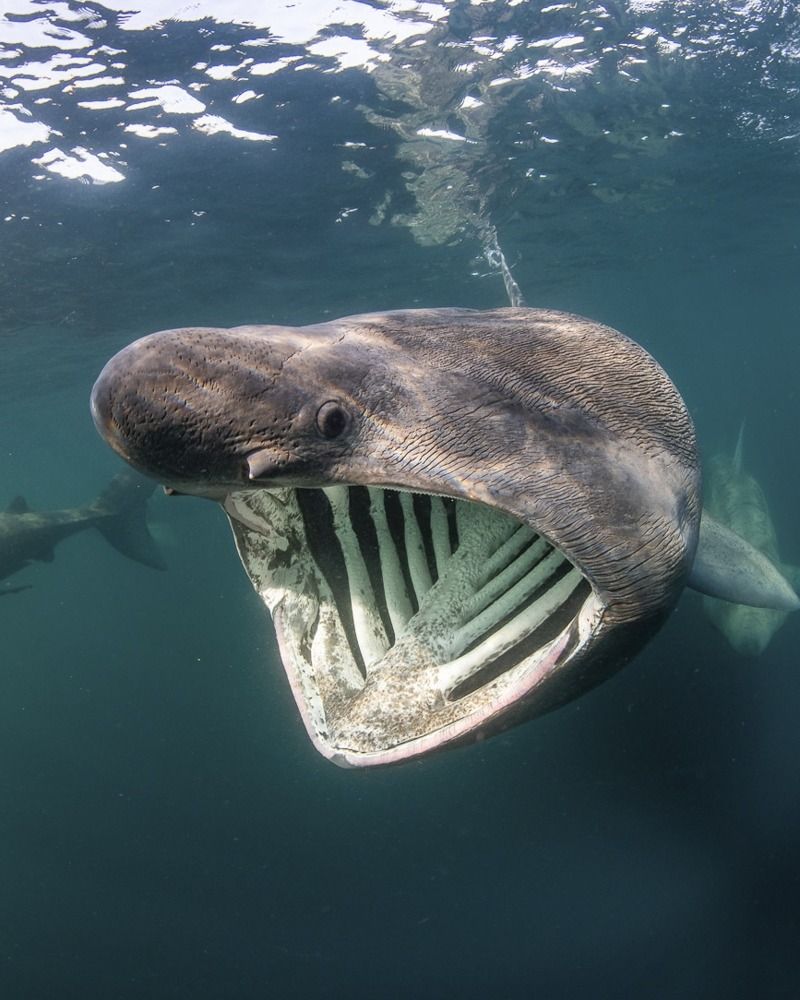
With their mouths wide open, Basking Sharks filter-feed their way through the New England waters. These gentle giants are the second-largest fish in the ocean, feeding on tiny plankton.
Their enormous size and docile nature make them a favorite among marine enthusiasts. Spotting a Basking
Shark is like catching a glimpse of an ancient relic, a testament to the ocean’s wonders. It’s a humbling experience to be sure.






